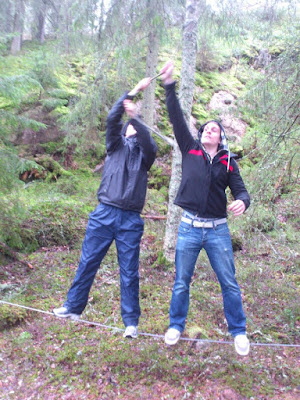First off I just want to clarify the title. If anyone was wondering, Christmas Eve is the major event in Swedish Christmas celebrations, and not Christmas Day. That was today's bit of cultural knowledge for you. So now on to what I actually intended to say with this blog post.
A bit more than a week ago I was doing some major lab work, which unfortunately didn't work very well. In the end I narrowed down the issue to an expired kit of reagents.
I proceeded to talk with my supervisor about this (who is in possession of the big bag of money), and she supported my decision to buy a new kit.
However, just ordering the damn stuff was not as simple as your everyday internet shopping for clothes, the latest blockbuster on blu-ray or any other odd item from a dark corner of the internet (because I'm sure even that would have been easier).
After finally finding the product I wanted, in the less than straightforward online store - I mean where have you even bought anything online where a simple search function in the store has given you nothing, but a bloody google search did? - I, as a first time customer, had to register for an account.
I've been using other online services of the same company before and was convinced that I already had an account. Oh boy was I wrong. Sure enough, I found my login credentials, but apparently the web store had a separate login system. However, instead of telling me something along the lines of 'wrong password and/or username' or 'there is no such e-mail address in our system' when I tried to retrieve the password I thought I had changed and forgotten about, their webpage simply said that the webpage I'm trying to access could not be retrieved.
Stupid me didn't realise that making another registration was even an option until two days later, when the mysterious internet access failure was still there.
After registering and adding "new" delivery and billing addresses everything had to pass through manual confirmation by the company before they would send me anything, naturally.
I thought the day I would be back in the lab would never come, in my wait I even had time to realise that I need a plan B for my current method in case everything goes south, and proceeded to order another kit (for a different but related purpose), which for the record (and thankfully), was much easier and faster to order.
So yesterday three packages with my name on them finally arrived and with all these cool new kits and reagents I felt like a kid on Christmas Eve! They were all neatly packed with two styrofoam boxes and one cardboard (there was a styrofoam box inside the middle cardboard box). The styrofoam boxes had the reagents which had to be shipped cooled or frozen, so naturally they had ice packs and dry ice in addition to my stuff.
For those that don't know anything about dry ice, it's basically frozen carbon dioxide (yes, the gas!) which has an approximate temperature of -80 degrees C.
Apart from being a convenient cooling agent it can also be used for some silly things in the lab with a little help from sample tubes, a regular sink and a little imagination.
Put a pellet of dry ice in a 2 mL tube, shake it briefly and throw it to the ground and you have your very own "fire cracker" (minus the fire). The thawing pellet will evaporate into carbon dioxide gas, build up the pressure and then pop the lid on the tube.
However, chances are that you will grow bored of cleaning up your messy floors long before you run out of dry ice pellets, so before putting away the box you could pour some of it into the sink and pour some regular tap water on it. This will quickly turn your sink into a "bubbling witch's cauldron".
There certainly are potential for some good pranks here, but if anyone asks, I never said (or did) any of these things.












